This certainly seems to be the topic of the month for non-profit people running in my circles. I’m not sure why this is the flavor of the month, but I’ve been asked this question so many times recently I took is as a sign from the universe (or the fundraising gods) that I should blog about it.
Why do board members quit on you?
 Oh, well let me count the reasons . . .
Oh, well let me count the reasons . . .
- They feel lost when it comes to asking for charitable contributions (aka lack of training)
- They feel uneasy about asking friends for money (aka they are asking inappropriately due to a lack of training which results in any number of FEARS and the feeling that they’re begging)
- They feel unsupported by staff (aka staff aren’t going out with them to help and model best practices)
- They sense there is a lack of organization behind their efforts (aka meetings are poorly attended or poorly organized, acknowledgement letters are sent late or sporadically, etc)
- Prospective donors are assigned to volunteers by staff without input from volunteers (aka they aren’t asking people with whom they are comfortable soliciting)
- They are busy people and there aren’t accountability tools being used by staff to keep everyone focused (e.g. report meetings, dashboards, scorecards, campaign reports, peer-to-peer phone calls)
- Fundraising efforts lack urgency (aka deadlines always seem to be extended, goals seem to shift/change, etc)
- They weren’t recruited appropriately and didn’t know what they were saying ‘YES’ to when joining the board (aka your board recruitment process lacks “expectation tools” like volunteer job descriptions, commitment pledges, etc)
I could go on and on and on with this list, but that wouldn’t be productive. Suffice it to say, if any of the aforementioned reasons describe your organization, you need to address it. Quickly! Otherwise, no matter how many new board members you recruit to replace the ones who quit on you, the problem will continue to recur.
All of this begs the question, “What can and should be done about board volunteers who quit on their fundraising responsibilities?”
Step One: Have a heart-to-heart discussion
 I have no idea why this is so scary for so many non-profit staff and board volunteers. It doesn’t have to be a confrontation. Here are a few talking points:
I have no idea why this is so scary for so many non-profit staff and board volunteers. It doesn’t have to be a confrontation. Here are a few talking points:
- Describe what you are observing (e.g. a reluctance to fundraise)
- Assure them that it happens in the case of many board volunteers
- Ask them what the trouble seems to be
- Listen – Listen – Listen (empathize where appropriate)
- Ask them how you can help
- If there is nothing you can do to help, then ask them how they’d like to move forward
Unfortunately, I’ve seen it too many times. Board members disengage and no one asks them if everything is OK and if they are in need of assistance.
It is troublesome when non-profit families start acting this way, which is why Step One is always to sit down and listen.
Step Two: Engage in cultivation & stewardship
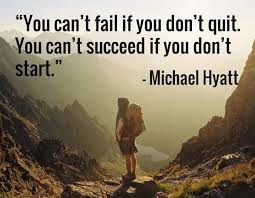 If the reasons given by your board volunteer aren’t things beyond anyone’s control (e.g. family member illness, work-related challenges, etc) and they simply don’t feel comfortable with solicitation, then ask them to get heavily involved in cultivation (e.g. engaging new prospective supporters) and stewardship (e.g. showing existing donors gratitude and return on investment) activities. (Note: don’t simply let them focus on other non-fundraising activities like programming or marketing)
If the reasons given by your board volunteer aren’t things beyond anyone’s control (e.g. family member illness, work-related challenges, etc) and they simply don’t feel comfortable with solicitation, then ask them to get heavily involved in cultivation (e.g. engaging new prospective supporters) and stewardship (e.g. showing existing donors gratitude and return on investment) activities. (Note: don’t simply let them focus on other non-fundraising activities like programming or marketing)
The following is a partial list of things you can ask of reluctant fundraising volunteers:
- Host a house party with people who don’t currently support your organization (e.g. party where staff briefly talk about the organization and the host follows up with participants to see if they are interested in learning more)
- Invite people who don’t currently give to your organization to tour your facilities and see the mission in action
- Invite people who aren’t donors/supporters out for a cup of coffee and simply chat about the organization (e.g. it is important for the board volunteer to share reasons why they are involved and passionate about the organization)
- Hand write letters to donors to express gratitude for their support
- Make phone calls to donors in the middle of the organization’s range of gifts chart to express gratitude, engage in a discussion about their reasons for support, and share a piece of organizational good news
- Invite larger major gifts donors/supporters out for a cup of coffee, share a copy of the most recent annual report, share any recent pieces of good news or programmatic results, and talk passionately about the future
I’m not suggesting you ask a reluctant fundraising volunteer to do one of two of these things. I am suggesting you immerse them in these activities. You might try asking them to complete five handwritten letters, five phone calls AND five in-person contacts every month for the next year.
Why?
In my experience, there is something curative when board members have substantive encounters with others that focus on community need, mission, vision, and impact.
I’ve seen a heavy dose of this approach help many volunteers get over their cold feet or malaise when it comes to fundraising.
Step Three: Finding a New Seat on the Bus
 Sometimes we can’t fix the problem. Board members are people, too. Their parents get sick. Their marriages falter. They end up with a new boss who demands more from them.
Sometimes we can’t fix the problem. Board members are people, too. Their parents get sick. Their marriages falter. They end up with a new boss who demands more from them.
When these things happen, the first order of business is empathy. This is what you’d do for a family member going through the same thing. Right? And board members are your non-profit family.
But whatever you do, you cannot make exceptions for individual board volunteers with regards to their fiduciary responsibilities. It is an all or nothing proposition.
I’ve seen it too often where one board member is given a pass (usually for good reason). It’s a slippery slope. Others board members start identifying reasons in their life why they can’t participate in fundraising. Worse yet, a schism materializes in the boardroom between “those who fundraise” and “those who don’t.” When this happens, resentment and ugliness aren’t far behind.
So, what does finding a new seat on the bus look like? It could be any number of things including (but not limited to):
- Taking a short sabbatical from the board
- Resigning from the board and moving into a new role (e.g. joining a committee, becoming a program volunteer, helping with small projects, remaining on as a donor, etc)
- Acting as an advisor (e.g. monthly, bi-monthly or quarterly coffee meetings with the CEO or development director)
- Becoming a community ambassador (e.g. speaking periodically at service clubs, etc)
We don’t banish or fire board members (unless of course it is a toxic/destructive situation). People who support our mission are valued and important. We keep them involved, but we do so in roles that are mutually beneficial and fulfilling.
How has your organization dealt with and addressed board members who quit fundraising (or maybe never really got started)? Please use the comment box below to share your thoughts and experiences. We can all learn from each other.
Here’s to your health!
Erik Anderson
Founder & President, The Healthy Non-Profit LLC
www.thehealthynonprofit.com
erik@thehealthynonprofit.com
http://twitter.com/#!/eanderson847
http://www.facebook.com/eanderson847
http://www.linkedin.com/in/erikanderson847

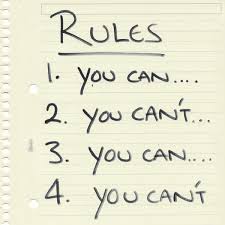 Have you ever stopped whatever you doing, took a deep breath, and observed the world around you? (And I mean really take a deep look.) I did this just the other day, and what I saw kind of surprised me. Everywhere I looked I saw
Have you ever stopped whatever you doing, took a deep breath, and observed the world around you? (And I mean really take a deep look.) I did this just the other day, and what I saw kind of surprised me. Everywhere I looked I saw 
 Last week, British voters stunned the world in a number of different ways. First, they voted in a non-binding referendum to invoke
Last week, British voters stunned the world in a number of different ways. First, they voted in a non-binding referendum to invoke  Communications experts refer to this experience as “
Communications experts refer to this experience as “ So, if you are still with me, you might be wondering what can be done to improve the likelihood that donors, board volunteers and staff are hearing (and understanding) what your organization needs them to know. While I am not a communications expert, here are a few thoughts:
So, if you are still with me, you might be wondering what can be done to improve the likelihood that donors, board volunteers and staff are hearing (and understanding) what your organization needs them to know. While I am not a communications expert, here are a few thoughts: Last week I found myself in New Orleans at Boys & Girls Clubs of America’s national conference sitting in an exhibitor booth trying to make new friends and connect with old ones. On Wednesday, right before the exhibitor area opened, I was visited by a fellow exhibitor from
Last week I found myself in New Orleans at Boys & Girls Clubs of America’s national conference sitting in an exhibitor booth trying to make new friends and connect with old ones. On Wednesday, right before the exhibitor area opened, I was visited by a fellow exhibitor from  “Hey, you got peanut butter in my chocolate!”
“Hey, you got peanut butter in my chocolate!” For the last few decades, the non-profit sector has been focused on data in an effort to convince donors to continue their philanthropic support. I still remember being a new executive director sitting in my first United Way meeting and learning about constructing logic models and differentiating between inputs, outputs, outcomes and pre- and post-test survey tools. All of this was piled on top of a slew of other data metrics my national office was asking for such as:
For the last few decades, the non-profit sector has been focused on data in an effort to convince donors to continue their philanthropic support. I still remember being a new executive director sitting in my first United Way meeting and learning about constructing logic models and differentiating between inputs, outputs, outcomes and pre- and post-test survey tools. All of this was piled on top of a slew of other data metrics my national office was asking for such as: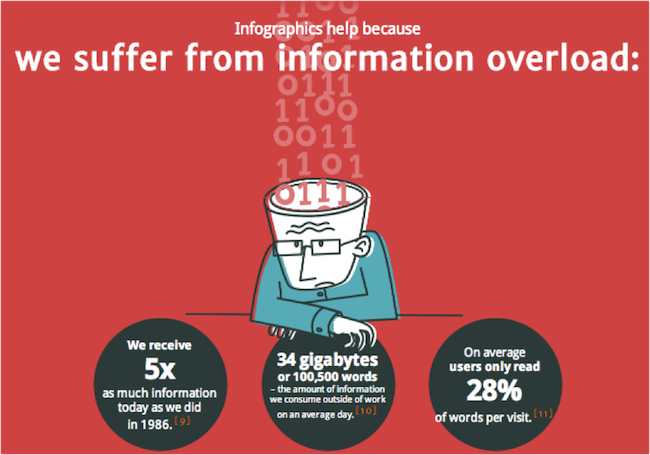
![IMG_20151220_110543620[1]](https://donordreams.files.wordpress.com/2015/12/img_20151220_1105436201.jpg?w=169) Happy Holidays, DonorDreams readers! I am one of those people who procrastinates gift shopping until the last minute, which is why I was so relieved last night when I snagged the last Minecraft video game for Xbox 360 off the shelf at Target for my niece. Phew! That was a close call. I know that gift giving isn’t just on my mind because last week one of my clients gave me a pen and set of blank cards designed by their clients as small token of their appreciation (see picture to right).
Happy Holidays, DonorDreams readers! I am one of those people who procrastinates gift shopping until the last minute, which is why I was so relieved last night when I snagged the last Minecraft video game for Xbox 360 off the shelf at Target for my niece. Phew! That was a close call. I know that gift giving isn’t just on my mind because last week one of my clients gave me a pen and set of blank cards designed by their clients as small token of their appreciation (see picture to right).
 As I’ve already explained, I couldn’t sleep, and the Red Cross story by Larry Wilmore rattled me to my non-profit core.
As I’ve already explained, I couldn’t sleep, and the Red Cross story by Larry Wilmore rattled me to my non-profit core. Recently, I’ve become frustrated by the word “stewardship” because every time I say it, the conversation immediately veers in the direction of gift acknowledgement letters, annual reports, thank-a-thon events, etc. While these things are important and necessary, the fact of the matter is that recognition is only a part of stewardship.
Recently, I’ve become frustrated by the word “stewardship” because every time I say it, the conversation immediately veers in the direction of gift acknowledgement letters, annual reports, thank-a-thon events, etc. While these things are important and necessary, the fact of the matter is that recognition is only a part of stewardship. I went looking online for other non-profit consultants and bloggers with ideas to share. So, I wasn’t surprised when I came across a similar post from Marc Pitman (otherwise known as The Fundraising Coach). He also talks about Haiti and the Red Cross, and at the end of his blog post he lays out an awesome 30 minute exercise you can facilitate in your boardroom or with your resource development committee.
I went looking online for other non-profit consultants and bloggers with ideas to share. So, I wasn’t surprised when I came across a similar post from Marc Pitman (otherwise known as The Fundraising Coach). He also talks about Haiti and the Red Cross, and at the end of his blog post he lays out an awesome 30 minute exercise you can facilitate in your boardroom or with your resource development committee.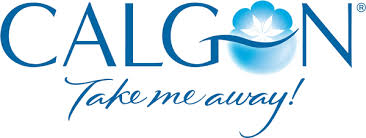 Let’s face it. Working in the non-profit sector can feel like a grind. Compensation is typically less than what can be made in the for-profit sector. Clients can be challenging. Donors are awesome people, but getting them what they want and need can be difficult. Managing the day-to-day affairs of a resource strapped organization can leave you mumbling those words you learned from a
Let’s face it. Working in the non-profit sector can feel like a grind. Compensation is typically less than what can be made in the for-profit sector. Clients can be challenging. Donors are awesome people, but getting them what they want and need can be difficult. Managing the day-to-day affairs of a resource strapped organization can leave you mumbling those words you learned from a  I thought that day back in 2001 was a huge non-monetary payday for me, but I realized how wrong I was while waiting for the ECC graduation event to get started. As the Class of 2015 filed into the gymnasium, LaShaunda took her seat on the main stage because she was the commencement speaker. Sitting among her proud family members, this is what I learned (much of which I knew but some I did not):
I thought that day back in 2001 was a huge non-monetary payday for me, but I realized how wrong I was while waiting for the ECC graduation event to get started. As the Class of 2015 filed into the gymnasium, LaShaunda took her seat on the main stage because she was the commencement speaker. Sitting among her proud family members, this is what I learned (much of which I knew but some I did not):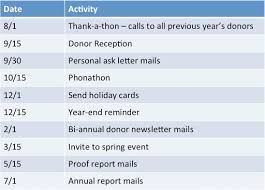 A few weeks ago I received an email from
A few weeks ago I received an email from